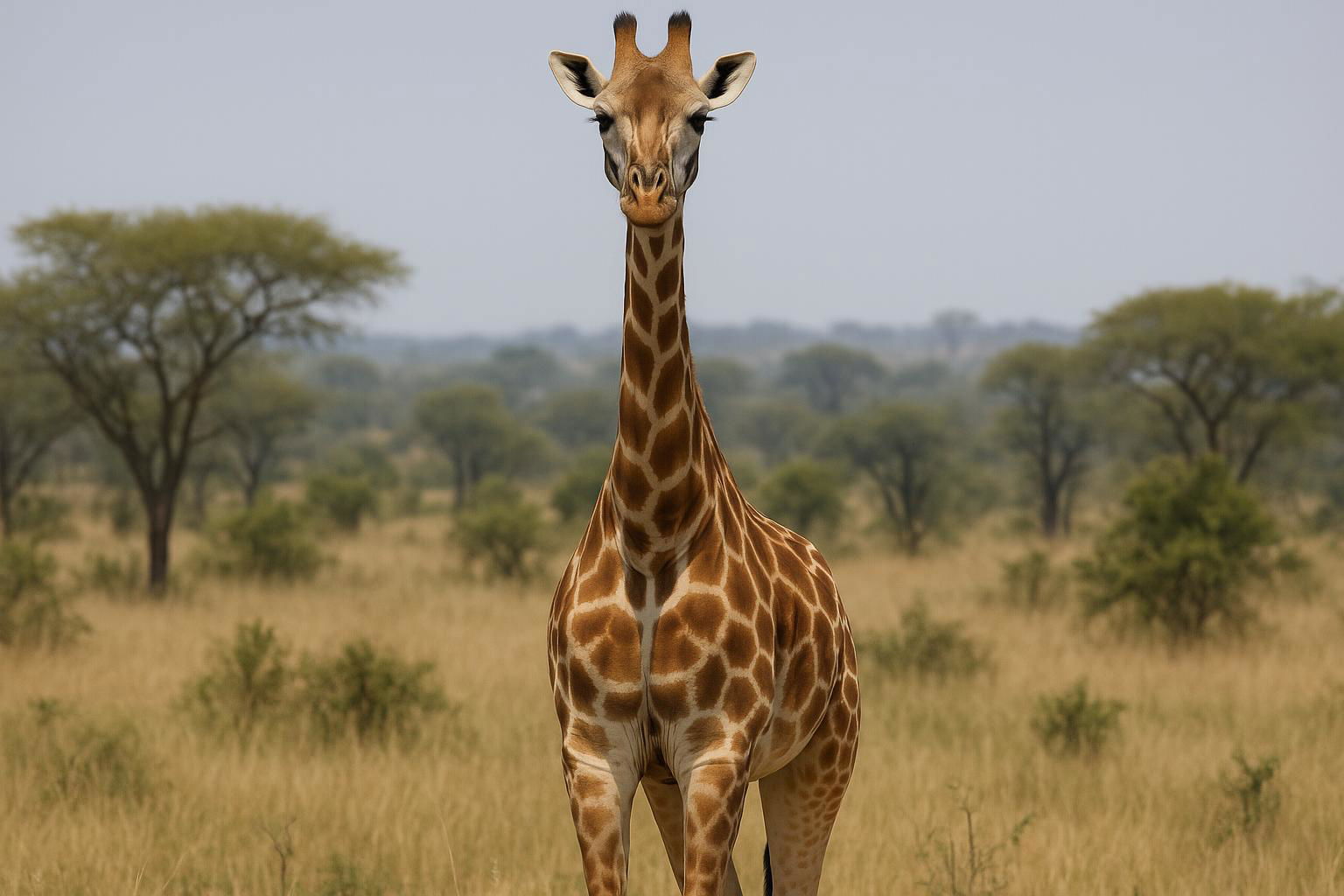
Giraffe
Giraffa camelopardalis
The giraffe, scientifically known as Giraffa camelopardalis, is the tallest terrestrial animal and an iconic creature native to the savannahs and open woodlands of sub-Saharan Africa. Renowned for its long neck and legs, the giraffe can reach heights of up to 18 feet, with its neck alone measuring up to 6 feet. The giraffe's distinctive coat is a mosaic of dark, irregular patches against a light background, with patterns and colors varying across different subspecies. These patches serve as camouflage in their natural habitat. Adapted to spotting predators from afar, giraffes have excellent vision and a keen sense of hearing. Their long necks, supported by a relatively small number of elongated vertebrae, allow them to access food high up in trees, primarily feeding on acacia leaves with their prehensile tongues that can extend up to 18 inches. Social by nature, giraffes often form loose herds, where their social structures are fluid. Despite their size, giraffes are surprisingly graceful and capable of reaching speeds up to 37 mph over short distances. However, habitat loss and poaching have led to a decline in their numbers, prompting conservation efforts to protect these gentle giants and their ecosystems.
Colors: Wild Type
 All Species & Breeds
All Species & Breeds
 Highland Cattle
Highland Cattle
 Miniature Donkeys
Miniature Donkeys
 All Species Directory
All Species Directory
 Highland Cattle in Virginia
Highland Cattle in Virginia
 Miniature Donkeys in Texas
Miniature Donkeys in Texas












